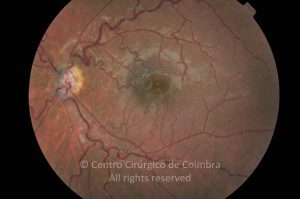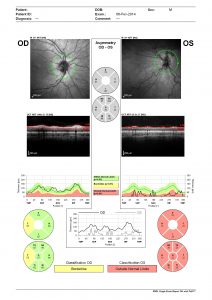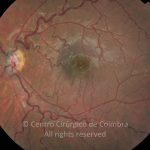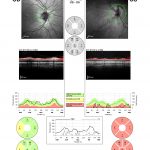Optic nerve hypoplasia (ONH) is a congenital condition in which the optic nerve is underdeveloped (small) and is characterized by a decreased number of optic nerve axons. It can present unilaterally or bilaterally.
Ophthalmoscopically, the hypoplastic disc may appear gray or pale in color and is often surrounded by a yellowish mottled peripapillary halo, bordered by a ring of increased or decreased pigmentation. It is often associated with selective tortuosity of the retinal veins.
Visual acuity ranges from 20/20 to no light perception, and affected eyes show localized visual field defects. The affected eyes show localized visual field defects. Nystagmus may be noted when both eyes are involved. The incidence of strabismus is increased with ONH. Electroretinography is normal in the majority of patients.
Optic nerve hypoplasia is frequently associated with other CNS anomalies, such as septum pellucidum absence, agenesis of corpus callosum, cerebral hemisphere abnormalities, or pituitary gland abnormalities. Septo-optic dysplasia (De Morsier syndrome) is used to describe the association between optic nerve hypoplasia and the absence of septum pellucidum and agenesis of the corpus callosum.
Most cases of ONH have no clearly identifiable cause but hypoplasia has been associated with maternal diabetes, maternal alcohol and drug abuse, maternal use of anti-epileptic drugs, and young maternal age (20 years of age or less).









